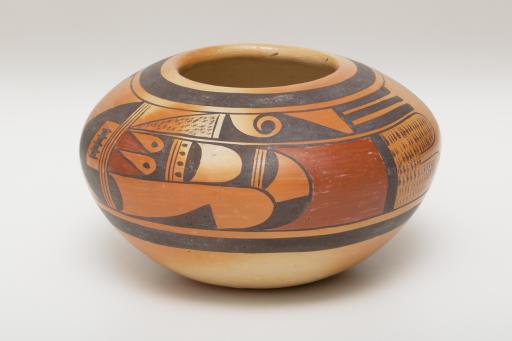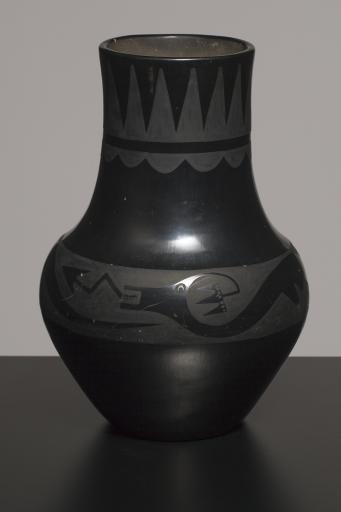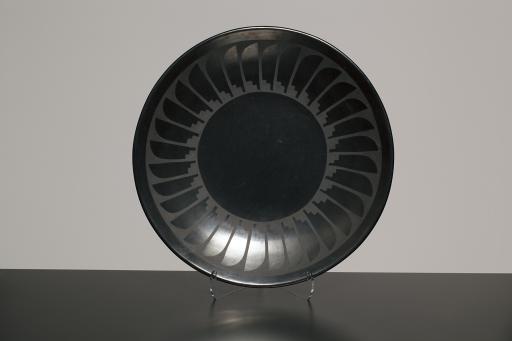Innovation and Legacy
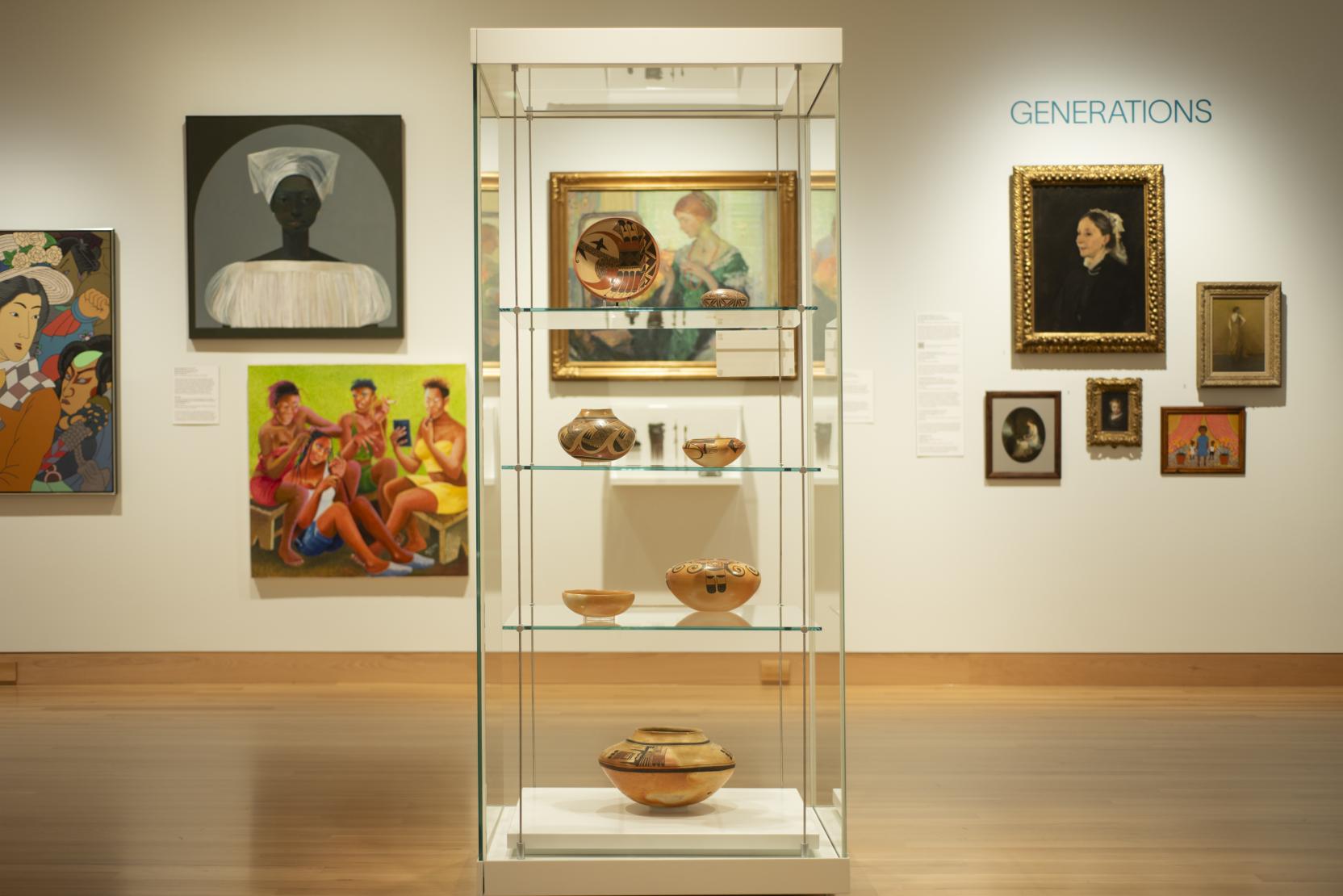
Intro
The Empowerment exhibition in our Michaelis Gallery features a case of pottery by all five generations of the Nampeyo family that are represented in our collection. This installation focuses on the significance and power of intergenerational knowledge.
Born in 1859 in the village of Hano on First Mesa in what is now Arizona, Nampeyo of Hano (Hopi) learned pottery making from her grandmother and began selling her work at trading posts in the 1870s. She began incorporating designs on potsherds—broken pieces of ceramic materials—found in excavations at ancient village sites nearby. Her work became well known as she traveled to places like Hopi House at the Grand Canyon and even to World’s Fairs in major cities.
While Nampeyo was influenced by the shapes and design patterns from several types of ancestral Puebloan pottery, the one she became most known for was the Sikyatki polychrome style. Drawing inspiration from certain design patterns, she incorporated her own artistic expression to make them her own. Two of the most recognizable patterns that appear in her and her descendants’ work are the “eagle” or “bird tail” and the “migration” or “bat wing” designs.
By the early 1900s, Nampeyo’s eyesight began to diminish, and she began to work with her daughters, in particular Fannie Nampeyo (Hopi), who became well-known in her own right and continued the family’s legacy by teaching her children. Each generation has continued to use some of the recognizable family design characteristics while making their own design innovations.
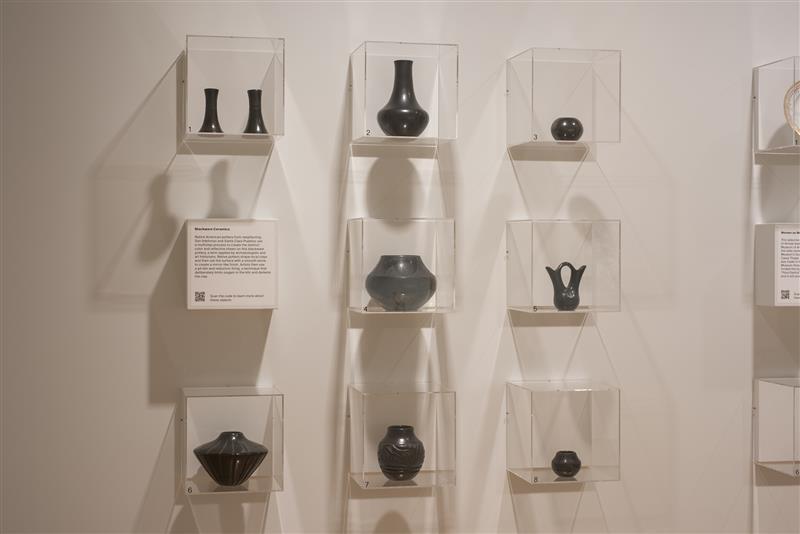
Section 2
The Intersections exhibition in our Stewart Gallery features a ceramics wall that includes works by artists from both San Ildefonso and Santa Clara Pueblos, with an emphasis on blackware pottery. It speaks to the transmission of knowledge within and between generations as well as the ways Indigenous artists have navigated a complex art world.
Maria Poveka Montoya Martinez (San Ildefonso) was born in 1887 at San Ildefonso Pueblo in what is now New Mexico. Like many Pueblo potters, Martinez began making pottery when she was young, learning primarily from family members, including her aunt, Nicolasa Montoya. She spent most of her life at San Ildefonso and became one of the most well-known Native American potters, traveling to World’s Fairs and selling her work at the Palace of the Governors in Santa Fe. While she and her husband, Julian, began their careers with black-on-white, or polychrome, they became famous for blackware, or black-on-black pottery.
Like Nampeyo, the Martinezes were influenced by pottery found at Ancestral Puebloan sites in present-day New Mexico. They worked together to revitalize and refine blackware pottery. The shiny surface of the pottery is created by polishing or burnishing the surface of the clay to a high shine using a smooth stone or dried gourd. To create the deep black color, potters use reduction firing, a process in which the iron rich clay is smothered with dung and ash to create an anoxic environment that tuns the clay from red-orange to deep black. The contrast between the shiny and matte surfaces is created by burnishing the clay first and then painting on the designs with slip—a liquid form of clay.
Julian Martinez, painter, Maria Martinez, artist
vase with Avanyu design, 1900s
ceramic, paint, burnishing
Gift of Dr. and Mrs. Richard Cummings, 1981.0207
Maria Martinez, artist, Santana Roybal Martinez, painter
plate with feather design, mid 1900s–1956
ceramic, paint, burnishing
Source unknown, 2007.4417
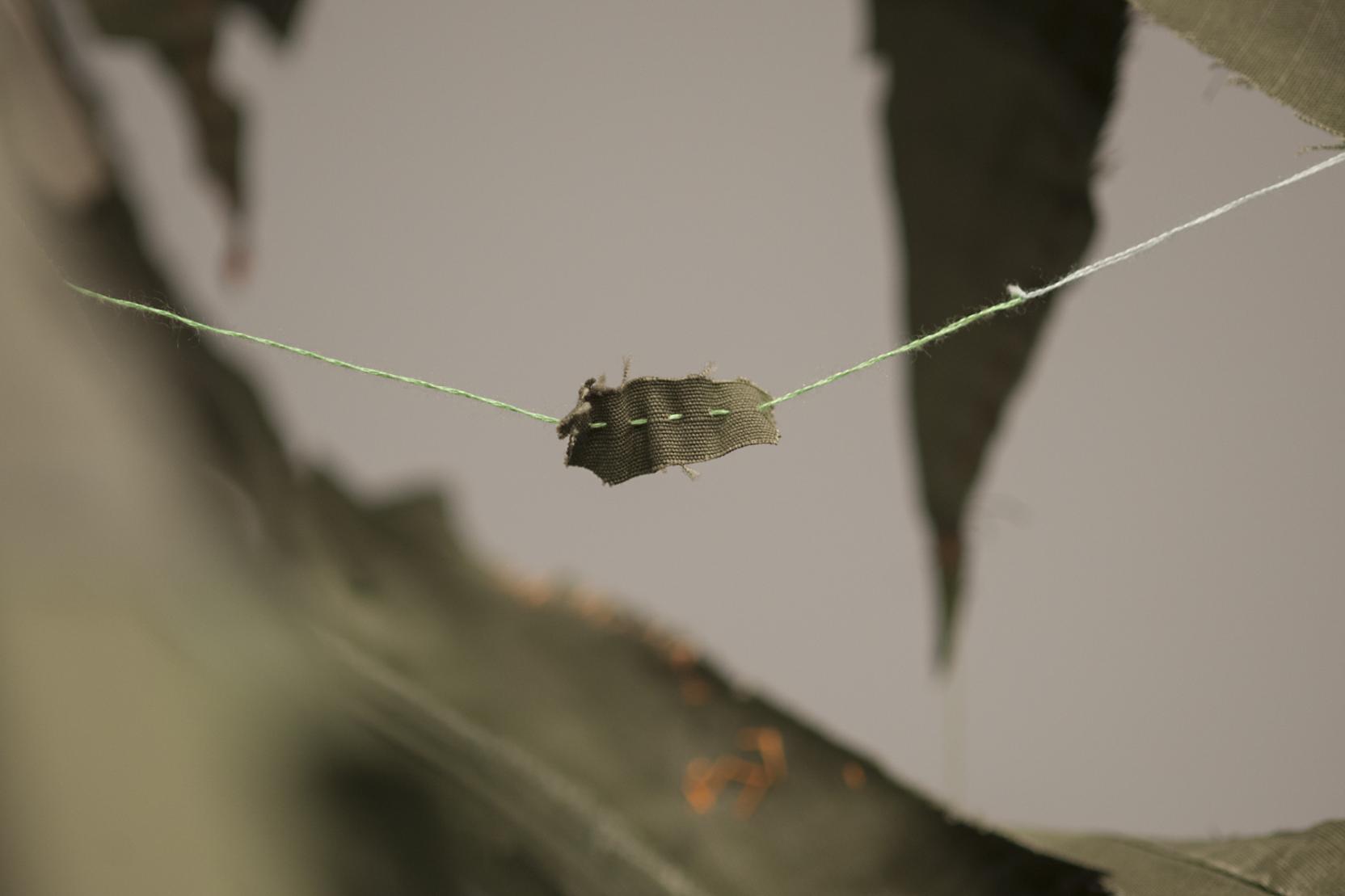
View another story
Green Hammock by Ke-Sook Lee

